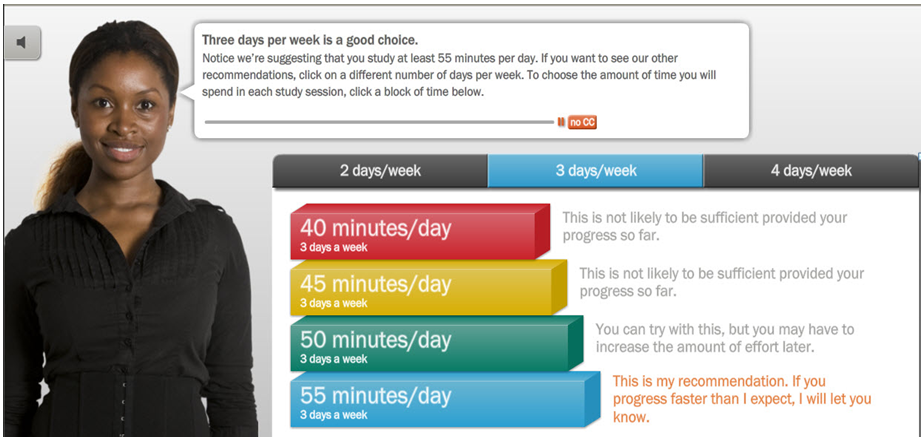Program Invites Test-Takers to ‘Study Smarter,’ Not Longer
Schools have been experimenting for years with “personalized learning” tools and environments, meant to tailor instruction to individual students’ needs. And commercial providers, not surprisingly, have become increasingly boastful about their ability to deliver that content.
But can this personalization be applied to students’ study habits, too?
A major player on the K-12 landscape, McGraw-Hill Education, is convinced that it can. The company recently announced plans to put forward a product it touts as an “adaptive-study” program for adults preparing to take the GED and other high school equivalency tests.
The program relies on software developed previously by McGraw-Hill, called LearnSmart, aimed at helping students within K-12 systems “study smarter, not longer,” in the company’s words, by encouraging them to devote more time to the content areas where their knowledge is weakest.
The company’s new adaptive-study program, called Common Core Achieve, is catered toward high school dropouts and others who are preparing to take the GED, and two other high school equivalency exams: the Test Assessing Secondary Completion, which was developed by McGraw-Hill; and the HiSET, which ETS developed as its alternative to the GED.
Many educators and researchers say too many students don’t know how to make the most out of study time, and that many of them could study less, or at least more efficiently, and learn more.
Some say students would benefit from the development of , by creating models for effective studying, while others suggest that repeated tests can be more effective than some forms of studying. See my colleague Sarah Sparks’ coverage of these topics in Education Week.
McGraw-Hill’s adaptive-study system begins with users taking a diagnostic test that gauges their knowledge of the content they will face on the high school equivalency test they’re prepping for, said Amanda Stedke, the director of product marketing for specialized solutions at McGraw-Hill Education.
Based on students’ performance on that test, as well as on how much time they have before they have to take the actual high school equivalency exam (a couple weeks or many months) the program then gives users recommendations for the academic areas where they need to devote the most time—as well as recommendations on the specific amount of time they need to devote to it to get up to speed—a half-hour per day, for instance, or a couple hours per day for those who have more catching up to do.
The new adaptive-study program will be piloted this fall and rolled out in full in January, Stedke said. It sells for $24 apiece, for one year of access. Users buy the version of the adaptive-study system geared toward the specific test they’re getting ready to take.
Four subject areas are included: literacy, math, science, and social studies. While much of the work is delivered online, the various materials—which include core instructional materials and teacher professional-development resources—are also delivered in print, in part because it’s what the adult users demand, McGraw-Hill officials say.
Here’s a basic visual depiction of how that cycle of testing-and-recommendations works, provided by McGraw-Hill:

Stedke said the name of the high-school equivalency test derives from fact that the new GED is meant to be aligned to the Common Core State Standards, and thus so is the test-prep to get students ready for the exam.
Whether this program, or others with similar goals, end up proving popular within K-12 systems remains to be seen. McGraw-Hill’s adaptive study is meant to help students and adults lay out a realistic, and effective, study schedule, Stedke says. But it’s still up to students and adults to follow through, so that they’re not cramming for the exams, or going in unprepared.
“The user has the ability to say, ‘I have X amount of time leading up to the exam,'” Stedke says. But obviously, she added, “the longer they’re going to prepare, the better-prepared they’re going to be.”
